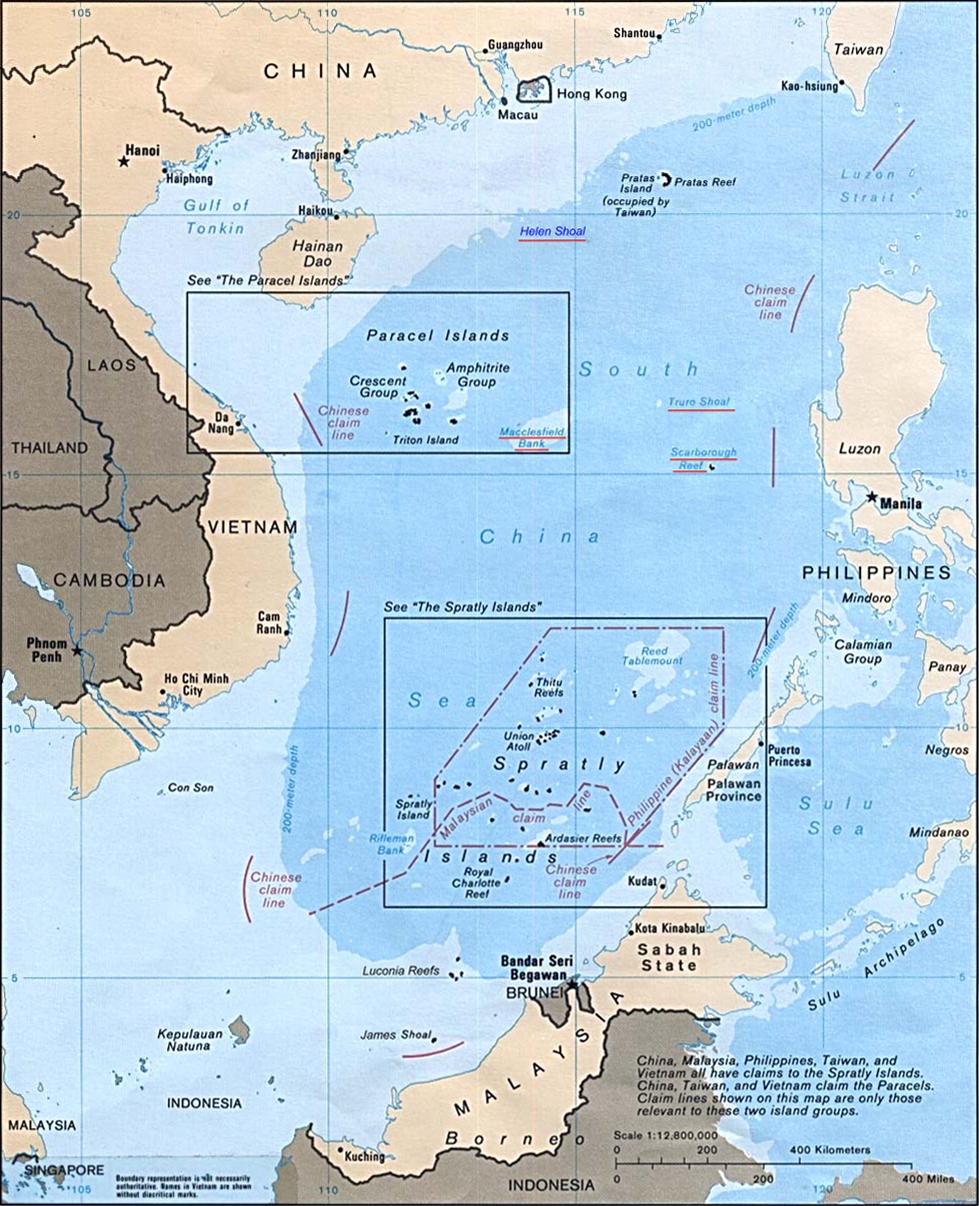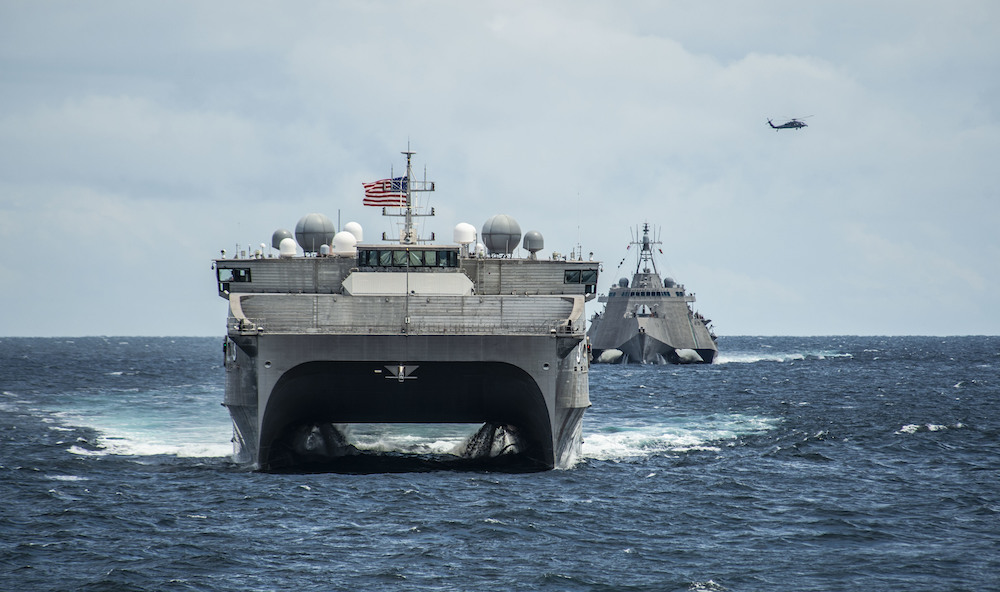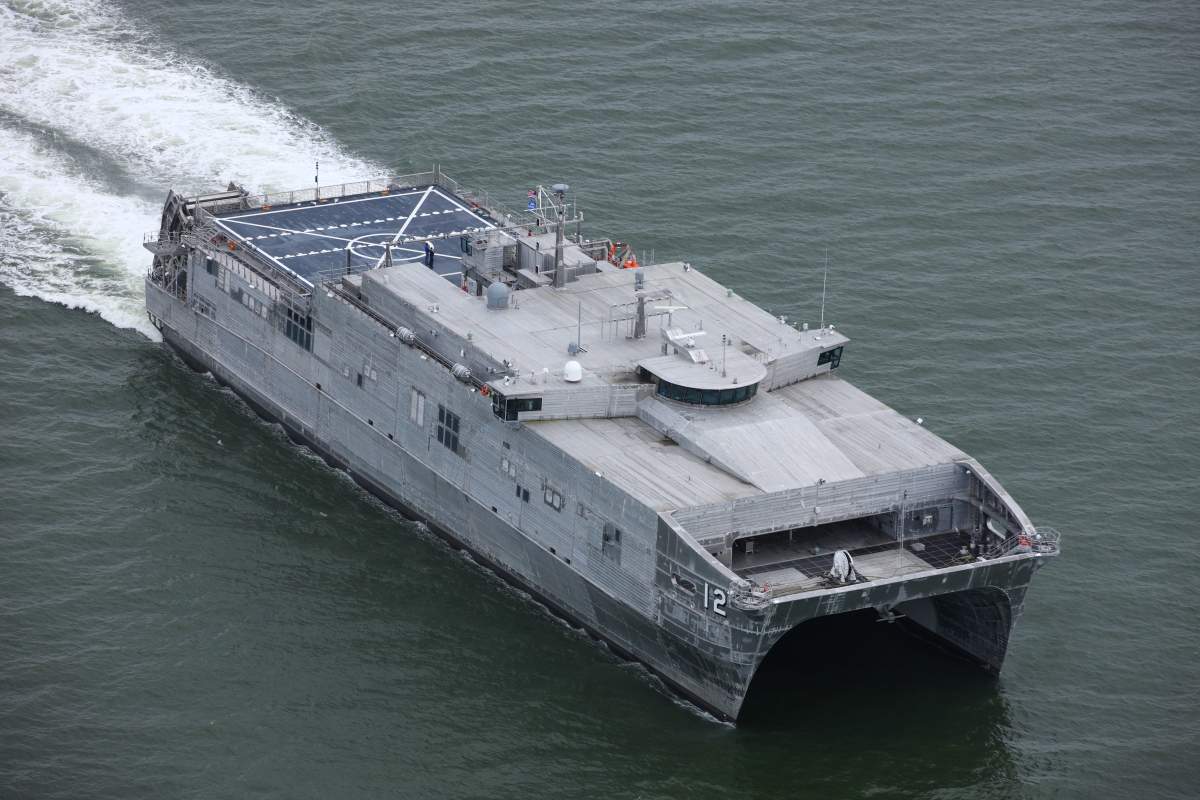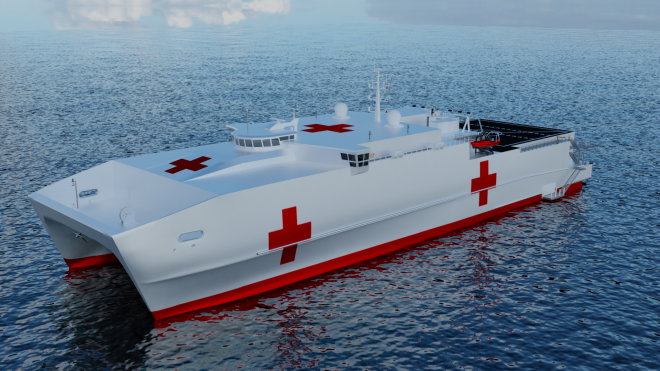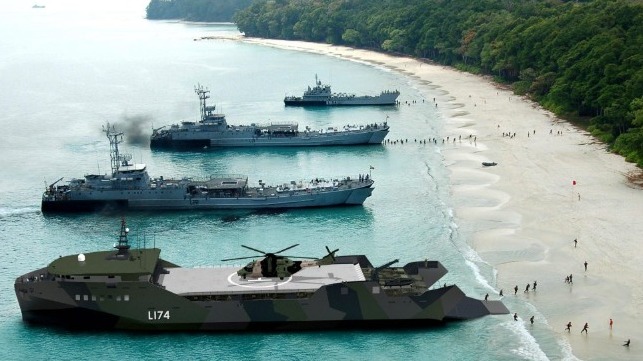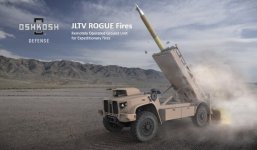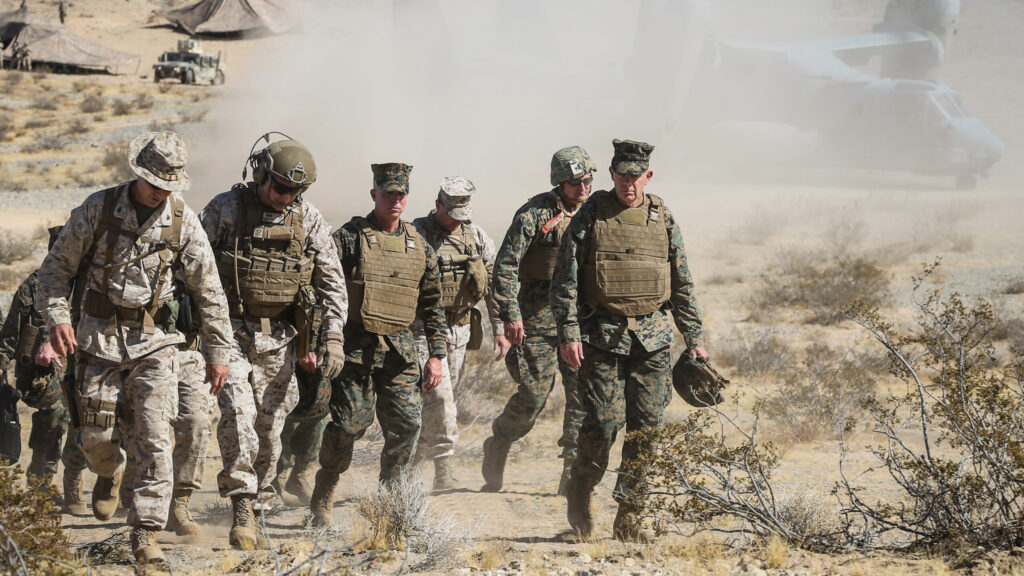The document outlines an evolving effort to stand up a series of small, agile units tasked with air defense, anti-ship and submarine warfare, and seizing, holding and resupplying ad hoc bases to support an island-hopping campaign in the Pacific.
An ambitious new Marine Corps planning document outlines historic changes in how the service plans to equip, organize, and train over the next decade to meet the challenges of Chinese and Russian competition, ushering in changes not seen since the 1920s.
The unreleased 180-page document is meant as a first iteration of an effort to
create a series of small, agile units tasked with air defense, anti-ship and submarine warfare, and seizing, holding and resupplying small temporary bases as part of an island-hopping campaign in the Pacific [emphasis added].
The
Tentative Manual For Expeditionary Advanced Base Operations, a copy of which was obtained by Breaking Defense, calls for putting into practice by 2030 the vision Marine Commandant Gen. David Berger has been hinting at for years. There are plans for small, ad hoc bases to launch missiles and refuel and resupply tropps on the move. New generations of precision-guided missiles to sink ships. Classes of manned and unmanned ships to both shoot and quickly ferry troops and supplies amid contested islands, and partnerships with the Navy and special operations troops to secure shipping lanes and austere outposts.
“The scale of the problem today cannot be met by merely refining current methods and capabilities,” the authors proclaim, opening the door for their demand to overhaul of how the Corps does business.
Their solution suggests there will be a unique list of demands in the 2022 budget coming this spring, and the five-year projection that accompanies it.
On the equipment side, the assumptions are sweeping and significant, putting a range of new and developmental gear into the field quickly and at scale.
By 2030, the Marines call for having over 100 Long Range Unmanned Surface Vessels (LRUSV) in the fleet, performing surveillance and strike missions using small, precision-guided drones capable of loitering over targets before hitting their target[emphasis added]. The Corps recently contracted with Louisiana-based shipbuilder Metal Shark to start building the first LRUSVs, which look to be a version of the company’s 11-meter ships.
Those ships will be joined by larger, crewed Light Amphibious Warships which are “envisioned as the principal littoral maneuver vessel” for units working amid small islands or jumping between archipelagos to deny an enemy fixed targets to strike. The ships will deliver personnel and equipment to relatively shallow inlets and keep the troops on the ground from having to rely on ground resupply.
The manned and unmanned ships will be loosely configured within Littoral Maneuver Squadrons, which also include “next-general logistics ships, and other connectors that enable movement of the littoral force” quickly and relatively stealthily.
Significantly for the emerging Marine vision to support the Navy at sea from agile land-based batteries, the
new plan also calls for standing up 14 new precision strike batteries dubbed NMESIS (Navy-Marine Expeditionary Ship Interdiction System). By 2030, the Marines call for 252 launchers stacked with hundreds of Naval Strike Missiles, a powerful threat to hold enemy ships out of the 115 mile range of the missile. The Corps’ launchers consist of an unmanned JLTV chassis with a HIMARS-like launcher firing the precision missile [emphasis added].
Those ships will help support a litany of new units, which have gone unnamed until now.
Berger and other Marine leaders have long talked about standing up three Marine Littoral Regiments in the Indo-Pacific
within the next several years, but the new document fleshes out what the units falling under that umbrella will look like by 2030.
Those units include Littoral Combat Teams, Littoral Logistics Battalions, and Littoral Antiair Battalions. These units are at the heart of the Expeditionary Advanced Base Operations (EABO) concept the Corps has been developing.
“I’d ask folks to stretch out their brains for us and think of EABO much wider than” a ground support battery for the fleet, Berger said late last year. “I think a
huge aspect of how we’re going to use EABO going forward is what the naval force might call scouting and counter-scouting, or the Army calls reconnaissance and counter-reconnaissance” deep inside contested areas.
The combat team, about the size of the battalion, will be tasked with running multiple small bases “that are conducting sustained operations to enable fleet operations via sea denial,” including outposts responsible for re-arming and refueling forces in the region as well as “conducting major combat operations [emphasis added].”
Littoral Antiair Battalions will play a key role in protecting and supporting troops deployed within the range of advanced aircraft and precision weapons. The units “will be a composite battalion that includes elements from the Marine wing support squadron, Marine wing communications squadron, Marine air support squadron, Marine air control squadron, and ground-based air defense.”..
To pay for these new drones, ships, and missiles, Berger has said he plans to divest of the Corps’ inventory of Abrams tanks and shed 12,000 Marines, along with towed artillery, aircraft and helicopters. He has also pledged to reduce the number of F-35s in squadrons
while questioning the role the aircraft will play in his plans going forward. Those ideas will now run into the desires of members of Congress with jobs, and prestige at home, on the line.
The document outlines an evolving effort to stand up a series of small, agile units tasked with air defense, anti-ship and submarine warfare, and seizing, holding and resupplying ad hoc bases to support an island-hopping campaign in the Pacific.

breakingdefense.com


